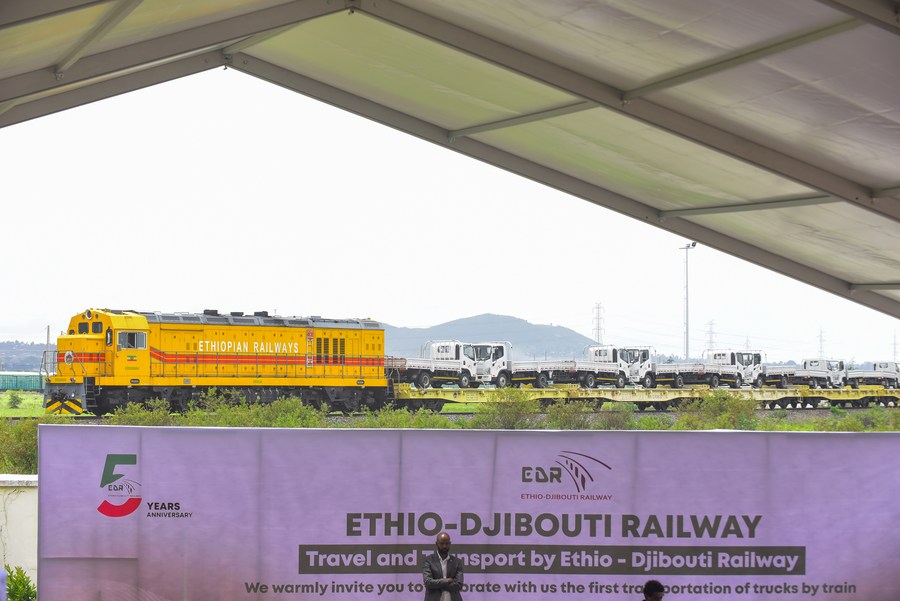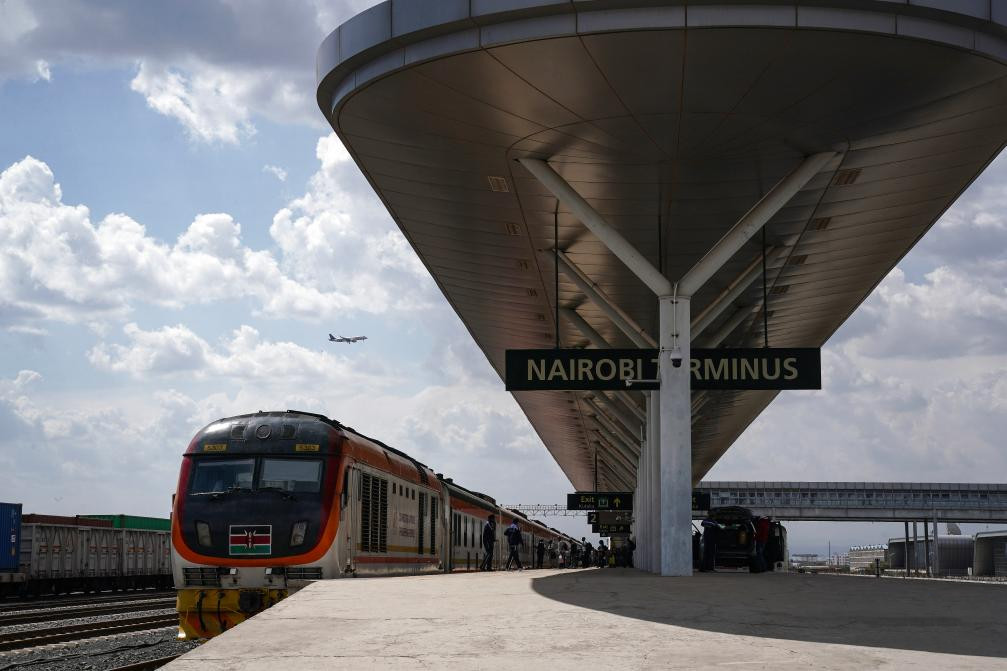Connecting the Dots

The BRI has contributed to the promotion of trade facilitation by improving transportation links and connectivity, reducing the turnaround transactions period and the cost of moving goods for trade between African countries.
Ten years ago, what began as a dream of the Chinese Government has evolved across various parts of the world into a key catalyst for job creation and poverty eradication, resulting in economic growth and development. As the Belt and Road Initiative (BRI), a China-proposed initiative to boost connectivity along and beyond the ancient Silk Road routes, celebrates its 10th anniversary this year, it has made a global impression as a vast and ambitious infrastructure development project whose main objective is to connect Africa, Asia, Europe and other regions via a network of roads, railways, ports and other key infrastructural developments.
At the inception stage, critics threw a wet blanket on the BRI, particularly on the realization that the growing Sino-African relationship was becoming a great force to be reckoned with. It became a point of ridicule to critics, who labeled it as “debt-trap diplomacy” and “debt colonialism.” But far from that, the BRI has witnessed a decade of inclusive infrastructure development programs in more than 150 countries, with more than 30 international organizations actively supporting the initiative since its launch in 2013.
Africa has been among the BRI’s biggest beneficiaries. In fact, statistics indicate that out of the 54 African countries, 52 have either signed or expressed interest in signing BRI cooperation framework agreements and benefited from projects under this initiative, particularly those related to roads, energy, ports and communications infrastructural development.
These projects are meant to open up African countries to trade by facilitating the construction of key domestic and regional infrastructure, to help African countries access affordable energy for industries and to open up transportation channels for African exports to international markets by creating efficient and reliable transportation channels.

Trade benefits
In Africa, the benefits of the BRI cannot be gainsaid. For the last 10 years, trade has been on the front foot. The BRI has advanced steadily through Sino-African consultative forums such as the China International Import Expo and the Forum on China–Africa Cooperation, which have opened up Chinese markets to exports from African countries. These forums have been guided by the principles of extensive consultation, joint contribution and shared benefits for policy coordination, facilities connectivity, unimpeded trade, financial integration and people-to-people bonds.
Sino-African relations have seen monumental growth in trade. According to trade statistics from the General Administration of Customs of China, total trade between Africa and China has surpassed the $2 trillion mark since the BRI was initiated in 2013. In fact, China has been Africa’s leading trading partner for 14 years. In 2022, trade between China and Africa stood at $282 billion, with a significant year-on-year growth of 11 percent.
Therefore, it is imperative to note that the BRI has been a major catalyst for the growth of trade in most African economies, promoting that trade through improved infrastructure. The connectivity created through the construction and upgrading of roads, railways, ports and airports has improved transportation networks significantly by reducing logistical bottlenecks, lowering shipping costs and facilitating the free movement of goods not just between Africa and China, but also within the African countries themselves.
Additionally, the new infrastructure network on the continent has extinguished barriers to trade by creating trade corridors that connect African countries to global markets. These corridors have become essential arteries for the free flow of goods, thereby making trade more efficient and cost-effective. This has played a pivotal role in reducing the prices of these goods at international markets, making African exports competitive.
For instance, the construction of the Mombasa-Nairobi Standard Gauge Railway (SGR) in Kenya at a cost of $3 billion by China has greatly reduced the time and cost of transporting goods from the port of Mombasa to other parts of the country and the region at large. The SGR has also been a good catalyst for promoting domestic and foreign tourism by facilitating more convenient and accessible movement of goods and people.
China’s grand plan is to increase trade between itself and Africa to $300 billion by 2025. To show commitment towards this cause, the Chinese Government has enacted a policy that covers over 8,800 different types of products, including clothing, agricultural goods and chemicals.

Trade milestones
The BRI has also opened up the African continent to trade through increased connectivity by way of digitization—encompassing the expansion of communication networks and the development of digital infrastructure. This has improved communication and access to information, especially in rural areas, catapulting most businesses to engage in both domestic and cross-border trade.
Last year, the Chinese Government waived tariffs on 98 percent of taxable imports from 18 African countries in two batches. This has ushered in an era of increased Chinese investment in the continent. In the last 10 years, according to statistics from China’s Ministry of Commerce, investment from China in Africa stood at $3.4 billion, with more than 3,000 companies investing in Africa.
The value of newly contracted Chinese enterprises in African countries in the past decade exceeded $700 billion, with a completed turnover of over $400 billion. The BRI has also been instrumental in ensuring the development of economic zones and industrial parks along the trade corridors in Africa. These zones are major magnets for foreign and domestic investors, thus stimulating manufacturing and processing for infant industries, resulting in the creation of employment opportunities for the youth and boosting trade.
In curing any potential trade impediments, the BRI has achieved significant trade milestones. For instance, the BRI has contributed to the promotion of trade facilitation by improving transportation links and connectivity, reducing the turnaround transactions period and the cost of moving goods for trade between African countries. This has resulted in the growth of trade volumes, benefiting both the African economies and China. In addition, the partnership has also led to an increase in agricultural output and food security in Africa.
The future of the BRI in Africa looks promising because it is the only surety for continued infrastructural development and an increase in trade. The construction of more roads, railways, ports and energy projects is a sure bet for enhanced connectivity and trade between African countries themselves, as well as with China.
The author is a Kenya-based economist, lawyer, consultant and a regional commentator on trade and investment. This article was first published in ChinAfrica magazine.
 Facebook
Facebook
 Twitter
Twitter
 Linkedin
Linkedin
 Google +
Google +










